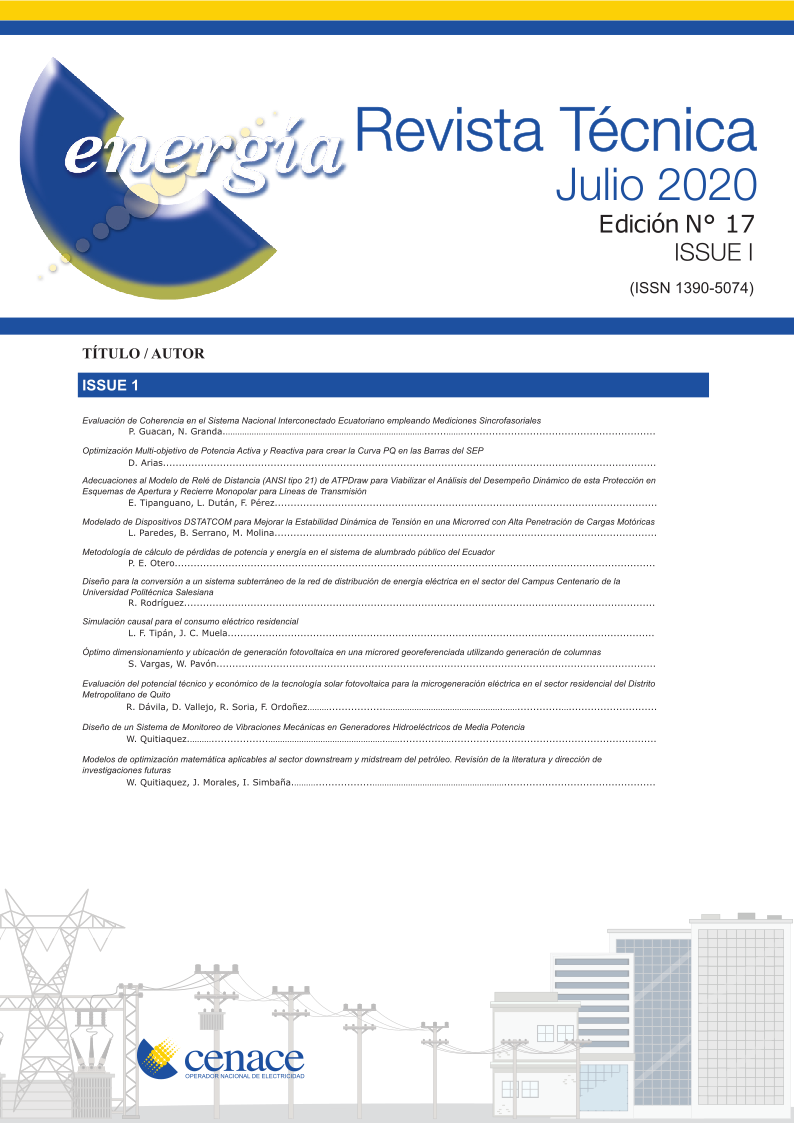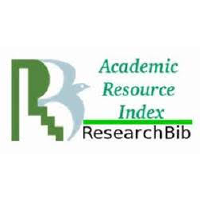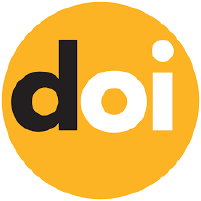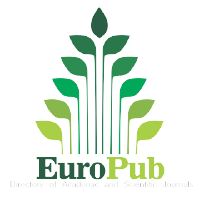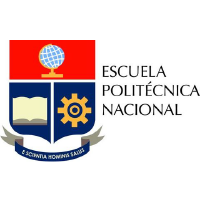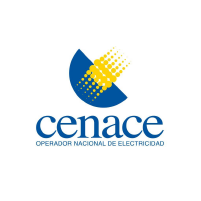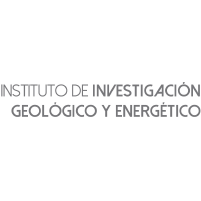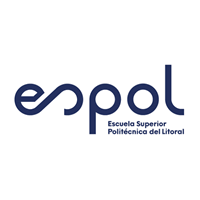Modelos de optimización matemática aplicables al sector downstream y midstream del petróleo. Revisión de la literatura y dirección de investigaciones futuras
Mathematics optimization models for downstream and midstream petroleum sectors. Literature review and future research directions
Cómo citar
Descargar cita
Mostrar biografía de los autores
Artículos similares
- Alex Villamarín Jácome, Miguel Saltos, Juan Echever, Dimensionamiento Óptimo de Sistemas Fotovoltaicos y Baterías en Entornos Residenciales para Reducir la Dependencia de la Infraestructura Eléctrica Centralizada , Revista Técnica "energía": Vol. 21 Núm. 2 (2025): Revista Técnica "energía", Edición No. 21, ISSUE II
- Andrés Pereira, Roberth Saraguro, Carlos Quinatoa, Evaluación de Pérdidas de Potencia Activa en el Sistema Eléctrico de la Empresa eléctrica Quito (EEQ) Aplicando un Algoritmo de Optimización , Revista Técnica "energía": Vol. 21 Núm. 1 (2024): Revista Técnica "energía", Edición No. 21, ISSUE I
- William Quitiaquez, Andrés Argüello, Isaac Simbaña, Patricio Quitiaquez, Evaluación del Comportamiento de Motores a Gasolina Mediante Simulación del Flujo de Aire a Través del Cuerpo de Aceleración , Revista Técnica "energía": Vol. 20 Núm. 1 (2023): Revista Técnica "energía", Edición No. 20, ISSUE I
- Jorge Paredes, Jaime Cepeda, Jorge Lozada, Parámetros para el Proceso de Molienda en Molinos Verticales Usando Métodos de Optimización , Revista Técnica "energía": Vol. 20 Núm. 2 (2024): Revista Técnica "energía", Edición No. 20, ISSUE II
- Alex Mullo, José Reinoso, Marlon Chamba, Carlos Lozada, Análisis y Caracterización de la Calidad de Energía utilizando Minería de Datos , Revista Técnica "energía": Vol. 22 Núm. 1 (2025): Revista Técnica "energía", Edición No. 22, ISSUE I
- Carlos Molina , Vladimir Bonilla, Aplicación de la Metodología CRISP-DM en el Análisis de Gases Disueltos en Aceite Dieléctrico de Transformadores Eléctricos del Sector Eléctrico Ecuatoriano , Revista Técnica "energía": Vol. 21 Núm. 1 (2024): Revista Técnica "energía", Edición No. 21, ISSUE I
- Diego Jiménez, Jhoao Rea, Pablo Muñoz, Gabriela Vizuete, Leonel Latacunga, Ciro Iza, Diseño y Construcción de un Medidor de Energía Digital Domiciliar , Revista Técnica "energía": Vol. 20 Núm. 1 (2023): Revista Técnica "energía", Edición No. 20, ISSUE I
- Joffre Constante, Augusto Riofrío, Aharon De La Torre, Jaime Cepeda, Metodología para Modelación Estacionaria y Dinámica del S.N.I en HYPERsim, Aplicación del Modelo en Análisis de Transitorios Electromagnéticos para Sistemas de 500 kV , Revista Técnica "energía": Vol. 16 Núm. 2 (2020): Revista Técnica "energía", Edición No. 16
- Flavio Villacrés, Alexis Torres, Marlo Chamba, Carlos Lozada, Estrategia Adaptativa para el Alivio de Carga en Sistemas Eléctricos de Potencia Basada en Regresión Lineal , Revista Técnica "energía": Vol. 22 Núm. 1 (2025): Revista Técnica "energía", Edición No. 22, ISSUE I
- Cristian Cuji, Jonathan Villarreal, Diseño y Evaluación de un Sistema Fotovoltaico Aislado para Iluminación en Vías Rurales y Carga de Vehículos Eléctricos Basado En Un Enfoque Multipropósito , Revista Técnica "energía": Vol. 20 Núm. 2 (2024): Revista Técnica "energía", Edición No. 20, ISSUE II
También puede Iniciar una búsqueda de similitud avanzada para este artículo.
Artículos más leídos del mismo autor/a
- William Quitiaquez, Isaac Simbaña, Robinson Caizatoa, César Isaza, César Nieto, Patricio Quitiaquez, Fernando Toapanta, Análisis del rendimiento termodinámico de una bomba de calor asistida por energía solar utilizando un condensador con recirculación , Revista Técnica "energía": Vol. 16 Núm. 2 (2020): Revista Técnica "energía", Edición No. 16
- Carlos Maigua, William Quitiaquez, Isaac Simbaña, Patricio Quitiaquez, Fernando Toapanta, César Isaza, Diseño de un Sistema de Monitoreo de Vibraciones Mecánicas en Generadores Hidroeléctricos de Media Potencia , Revista Técnica "energía": Vol. 17 Núm. 1 (2020): Revista Técnica "energía", Edición No. 17, ISSUE I
- Isaac Simbaña, William Quitiaquez, Patricio Cabezas, Patricio Quitiaquez, Estudio comparativo de la eficiencia de colectores solares de placa plana rectangular y triangular mediante el método de elementos finitos , Revista Técnica "energía": Vol. 20 Núm. 2 (2024): Revista Técnica "energía", Edición No. 20, ISSUE II
- Fernando Toapanta, Jairo Cortéz, William Quitiaquez, Wilson Orellana, Estudio Numérico Mediante CFD del Proceso de Enfriamiento con Intercambiadores de Calor en Sistemas Computacionales , Revista Técnica "energía": Vol. 17 Núm. 2 (2021): Revista Técnica "energía", Edición No. 17, ISSUE II
- William Quitiaquez, Andrés Argüello, Isaac Simbaña, Patricio Quitiaquez, Evaluación del Comportamiento de Motores a Gasolina Mediante Simulación del Flujo de Aire a Través del Cuerpo de Aceleración , Revista Técnica "energía": Vol. 20 Núm. 1 (2023): Revista Técnica "energía", Edición No. 20, ISSUE I
- Alex Rivera, William Quitiaquez, Isaac Simbaña, Patricio Quitiaquez, Estudio de la Generación y Distribución de Vapor en un Hospital para la Mejora de Eficiencia Energética mediante Termografía, Ultrasonido y Analizador de Gases , Revista Técnica "energía": Vol. 20 Núm. 2 (2024): Revista Técnica "energía", Edición No. 20, ISSUE II
- Isaac Simbaña, William Quitiaquez, José Estupiñán, Fernando Toapanta-Ramos, Leonidas Ramírez, Evaluación del rendimiento de una bomba de calor de expansión directa asistida por energía solar mediante simulación numérica del proceso de estrangulamiento en el dispositivo de expansión , Revista Técnica "energía": Vol. 19 Núm. 1 (2022): Revista Técnica "energía", Edición No. 19, ISSUE I
- William Quitiaquez, Christian Cholca, Erika Pilataxi, Fernando Toapanta, Evaluación de Redes de Tuberías con Configuración Flexible para el Transporte de Hidrocarburo , Revista Técnica "energía": Vol. 20 Núm. 1 (2023): Revista Técnica "energía", Edición No. 20, ISSUE I
- William Quitiaquez, Jorge Chimarro, John Valarezo, Patricio Quitiaquez, César Melendrez, Fernando Toapanta, Validación de un Prototipo de Medidor de Energía Trifásico como Apoyo para una Auditoría Energética , Revista Técnica "energía": Vol. 17 Núm. 2 (2021): Revista Técnica "energía", Edición No. 17, ISSUE II
- Kleber Zhañay, Cristian Leiva, Erika Pilataxi, William Quitiaquez, Modelo de Correlación Desgaste - Cantidad de Sedimentos para la Programación de Mantenimiento Preventivo de una central Hidroeléctrica , Revista Técnica "energía": Vol. 21 Núm. 2 (2025): Revista Técnica "energía", Edición No. 21, ISSUE II
Este artículo presenta una revisión de la literatura sobre los modelos de Programación Lineal y No lineal de Enteros Mixtos (MILP y MINLP, respectivamente por sus siglas en inglés) aplicados a la cadena de suministros del petróleo crudo, especialmente en el sector downstream y midstream. Los cuales se encargan de la producción, preparación y distribución de hidrocarburos de uso final como gasolina, diésel, jet y gas licuado de petróleo. El objetivo de esta investigación es comparar varios trabajos de investigación de operaciones, especialmente los que consideran el transporte de multi productos en una misma línea.
El articulo tiene el enfoque principal de realizar un planteamiento de la dirección futura de la investigación para la cadena de suministro del petróleo en los sectores downstream y midstream. De todos los artículos analizados los 32 generan un modelo MILP, de los cuales 26 modelan la estructura de distribución de combustibles en el sector downstream, no existe evidencia de trabajos de investigación de modelos MILP o MINLP desarrollados en el Ecuador. Finalmente, se discute futuras líneas de investigación referente a esta temática como la aplicación de MILP para la programación operativa de la red de la cadena de suministros del petróleo en el Ecuador. Herramienta que a futuro permitirá la toma de decisiones de nivel táctico y operativo de manera efectiva, considerando todas las variables de la red de distribución de combustibles para satisfacer una demanda prevista.
Visitas del artículo 1732 | Visitas PDF 568
Descargas
[1] A. P. Barbosa-Póvoa y J. M. Pinto, «Process supply chains: Perspectives from academia and industry», Computers & Chemical Engineering, vol. 132, p. 106606, ene. 2020.
[2] M. Govil y J.-M. Proth, «Supply Chain Design and Management Strategic and Tactical Perspectives», en Supply Chain Design and Management, M. Govil y J.-M. Proth, Eds. San Diego: Academic Press, 2002, pp. 1-6.
[3] S. M. Saad, E. H. Elsaghier, y D. Ezaga, «Planning and optimising petroleum supply chain», Procedia Manufacturing, vol. 17, pp. 803-810, ene. 2018.
[4] N. Moradinasab, M. R. Amin-Naseri, T. J. Behbahani, y H. Jafarzadeh, «Competition and cooperation between supply chains in multi-objective petroleum green supply chain: A game theoretic approach», Journal of Cleaner Production, vol. 170, pp. 818-841, 2018.
[5] X. Zhang y H. M. A. U. Yousaf, «Green supply chain coordination considering government intervention, green investment, and customer green preferences in the petroleum industry», Journal of Cleaner Production, p. 118984, 2019.
[6] R. G. Siwi, F. Aljumah, J. Li, y X. Xao, «Optimal Strategic Planning of Integrated Petroleum and Petrochemical Supply Chain», en 28th European Symposium on Computer Aided Process Engineering, vol. 43, A. Friedl, J. J. Klemeš, S. Radl, P. S. Varbanov, y T. Wallek, Eds. Elsevier, 2018, pp. 1201-1206.
[7] M. Farahani y D. Rahmani, «Production and distribution planning in petroleum supply chains regarding the impacts of gas injection and swap», Energy, vol. 141, pp. 991-1003, 2017.
[8] K. Tong, F. You, y G. Rong, «Robust design and operations of hydrocarbon biofuel supply chain integrating with existing petroleum refineries considering unit cost objective», Computers & Chemical Engineering, vol. 68, pp. 128-139, 2014.
[9] H. An, W. E. Wilhelm, y S. W. Searcy, «Biofuel and petroleum-based fuel supply chain research: A literature review», Biomass and Bioenergy, vol. 35, n.o 9, pp. 3763-3774, 2011.
[10] Sciences direct, «40,021 Search Results – Keywords (supply chain petroleum) - ScienceDirect». [En línea]. Disponible en: https://bibliotecas.ups.edu.ec:2230/search/advanced?qs=supply%20chain%20petroleum&show=50&sortBy=relevance. [Accedido: 10-nov-2019].
[11] «Oilfield Glossary en español - Schlumberger Oilfield Glossary». [En línea]. Disponible en: https://www.glossary.oilfield.slb.com/es.aspx. [Accedido: 11-nov-2019].
[12] J.-P. Favennec, «Petroleum Refining. Vol. 5 Refinery Operation and Management», en Petroleum Refining, 2001.
[13] G. Towler y R. K. Sinnott, «12.11 Mixed Integer Programming», en Chemical Engineering Design - Principles, Practice and Economics of Plant and Process Design, 2da edition., Elsevier, 2013.
[14] A. Fragkogios y G. K. D. Saharidis, «Modeling and Solution Approaches for Crude Oil Scheduling in a Refinery», en Energy Management—Collective and Computational Intelligence with Theory and Applications, C. Kahraman y G. Kayakutlu, Eds. Cham: Springer International Publishing, 2018, pp. 251-275.
[15] P. Popescu, «Software Implementation for Optimization of Production Planning within Refineries», Econ. Insights – Trends Chall, vol. VII(LXX), no 1, pp. 1-10, 2018.
[16] B. Hong et al., «An integrated MILP method for gathering pipeline networks considering hydraulic characteristics», Chemical Engineering Research and Design, vol. 152, pp. 320-335, 2019.
[17] C. Bian, H. Li, F. Wallin, A. Avelin, L. Lin, y Z. Yu, «Finding the optimal location for public charging stations – a GIS-based MILP approach», Energy Procedia, vol. 158, pp. 6582-6588, 2019.
[18] B. Wang, Y. Liang, J. Zheng, R. Qiu, M. Yuan, y H. Zhang, «An MILP model for the reformation of natural gas pipeline networks with hydrogen injection», International Journal of Hydrogen Energy, vol. 43, n.o 33, pp. 16141-16153, 2018.
[19] Q. Liao, Y. Liang, N. Xu, H. Zhang, J. Wang, y X. Zhou, «An MILP approach for detailed scheduling of multi-product pipeline in pressure control mode», Chemical Engineering Research and Design, vol. 136, pp. 620-637, 2018.
[20] H. Chen et al., «Optimizing detailed schedules of a multiproduct pipeline by a monolithic MILP formulation», Journal of Petroleum Science and Engineering, vol. 159, pp. 148-163, 2017.
[21] Q. Liao, H. Zhang, N. Xu, Y. Liang, y J. Wang, «A MILP model based on flowrate database for detailed scheduling of a multi-product pipeline with multiple pump stations», Computers & Chemical Engineering, vol. 117, pp. 63-81, 2018.
[22] H. Zhang, Y. Liang, J. Ma, C. Qian, y X. Yan, «An MILP method for optimal offshore oilfield gathering system», Ocean Engineering, vol. 141, pp. 25-34, 2017.
[23] X. Zhou et al., «A MILP model for the detailed scheduling of multiproduct pipelines with the hydraulic constraints rigorously considered», Computers & Chemical Engineering, vol. 130, p. 106543, 2019.
[24] B. Wang, Y. Liang, T. Zheng, M. Yuan, y H. Zhang, «Optimisation of a downstream oil supply chain with new pipeline route planning», Chemical Engineering Research and Design, vol. 145, pp. 300-313, 2019.
[25] A. Siddiqui, M. Verma, y V. Verter, «An integrated framework for inventory management and transportation of refined petroleum products: Pipeline or marine? », Applied Mathematical Modelling, vol. 55, pp. 224-247, 2018.
[26] T. A. Albahri, C. S. Khor, M. Elsholkami, y A. Elkamel, «A mixed integer nonlinear programming approach for petroleum refinery topology optimisation», Chemical Engineering Research and Design, vol. 143, pp. 24-35, 2019.
[27] Y. Wang, S. F. Estefen, M. I. Lourenço, y C. Hong, «Optimal design and scheduling for offshore oil-field development», Computers & Chemical Engineering, vol. 123, pp. 300-316, 2019.
[28] L. S. Assis, E. Camponogara, B. C. Menezes, y I. E. Grossmann, «An MINLP formulation for integrating the operational management of crude oil supply», Computers & Chemical Engineering, vol. 123, pp. 110-125, 2019.
[29] M. K. Almedallah y S. D. C. Walsh, «A numerical method to optimize use of existing assets in offshore natural gas and oil field developments», Journal of Natural Gas Science and Engineering, vol. 67, pp. 43-55, 2019.
[30] A. M. Attia, A. M. Ghaithan, y S. O. Duffuaa, «A multi-objective optimization model for tactical planning of upstream oil & gas supply chains», Computers & Chemical Engineering, vol. 128, pp. 216-227, 2019.
[31] R. E. Franzoi, B. C. Menezes, J. D. Kelly, y J. A. W. Gut, «Design for Online Process and Blend Scheduling Optimization», en Proceedings of the 9th International Conference on Foundations of Computer-Aided Process Design, vol. 47, S. G. Muñoz, C. D. Laird, y M. J. Realff, Eds. Elsevier, 2019, pp. 187-192.
[32] M. Quinteros, M. Guignard, A. Weintraub, M. Llambias, y C. Tapia, «Optimizing the pipeline planning system at the national oil company», European Journal of Operational Research, vol. 277, n.o 2, pp. 727-739, 2019.
[33] S. Xin et al., «A two-stage strategy for the pump optimal scheduling of refined products pipelines», Chemical Engineering Research and Design, vol. 152, pp. 1-19, 2019.
[34] F. Bayu, D. Panda, M. A. Shaik, y M. Ramteke, «Scheduling of Gasoline Blending and Distribution using Graphical Genetic Algorithm», Computers & Chemical Engineering, p. 106636, 2019.
[35] R. Qiu et al., «A multi-scenario and multi-objective scheduling optimization model for liquefied light hydrocarbon pipeline system», Chemical Engineering Research and Design, vol. 141, pp. 566-579, 2019.
[36] H. Zhang, Y. Liang, Q. Liao, J. Gao, X. Yan, y W. Zhang, «Mixed-time mixed-integer linear programming for optimal detailed scheduling of a crude oil port depot», Chemical Engineering Research and Design, vol. 137, pp. 434-451, 2018.
[37] A. Zaghian y H. Mostafaei, «An MILP model for scheduling the operation of a refined petroleum products distribution system», Operational Research, vol. 16, n.o 3, pp. 513-542, oct. 2016.
[38] W. Abdellaoui, A. Berrichi, D. Bennacer, F. Maliki, y L. Ghomri, «Optimal Scheduling of Multiproduct Pipeline System Using MILP Continuous Approach», en Computational Intelligence and Its Applications, Cham, 2018, pp. 411-420.
[39] H. Qu, J. Xu, S. Wang, y Q. Xu, «A novel MINLP model of front-end crude scheduling for refinery with consideration of inherent upset minimization», Computers & Chemical Engineering, vol. 117, pp. 42-62, 2018.
[40] T. Kirschstein, «Planning of multi-product pipelines by economic lot scheduling models», European Journal of Operational Research, vol. 264, n.o 1, pp. 327-339, 2018.
[41] H.-R. Zhang, Y.-T. Liang, Q. Liao, J. Ma, y X.-H. Yan, «An MILP approach for detailed scheduling of oil depots along a multi-product pipeline», Petroleum Science, vol. 14, n.o 2, pp. 434-458, may 2017.
[42] V. R. Rosa, E. Camponogara, y V. J. M. F. Filho, «Design optimization of oilfield subsea infrastructures with manifold placement and pipeline layout», Computers & Chemical Engineering, vol. 108, pp. 163-178, 2018.
[43] M. Jalanko y V. Mahalec, «Supply-demand pinch based methodology for multi-period planning under uncertainty in components qualities with application to gasoline blend planning», Computers & Chemical Engineering, vol. 119, pp. 425-438, 2018.
[44] O. Akgul, N. Shah, y L. G. Papageorgiou, «An MILP Model for the Strategic Design of the UK Bioethanol Supply Chain», en 21st European Symposium on Computer Aided Process Engineering, vol. 29, E. N. Pistikopoulos, M. C. Georgiadis, y A. C. Kokossis, Eds. Elsevier, 2011, pp. 1799-1803.
[45] A. Bittante, F. Pettersson, y H. Saxén, «Optimization of a small-scale LNG supply chain», Energy, vol. 148, pp. 79-89, 2018.
[46] P. Gutiérrez et al, «Análisis Nodal para determinar el punto óptimo de operación entre producción de petróleo y producción de GLP, maximizando el recurso energético de la Estación de producción de Petróleo, Aguarico», Revista Técnica "energía", Edición No. 16, Vol. 16 Núm. 2 (2020).
[47] S. Golla et al, «Primer Estudio para una Transición Energética Completa y Sostenible para Ecuador “El Fin del Petróleo”», Revista Técnica “energía”. No. 14, Pp. 246-255.
[48] Susana Relvas and Suelen N. et al, «Integrated scheduling and inventory management of an oil products distribution system», Revista Omega. No. 6, Pp. 955 - 968.
